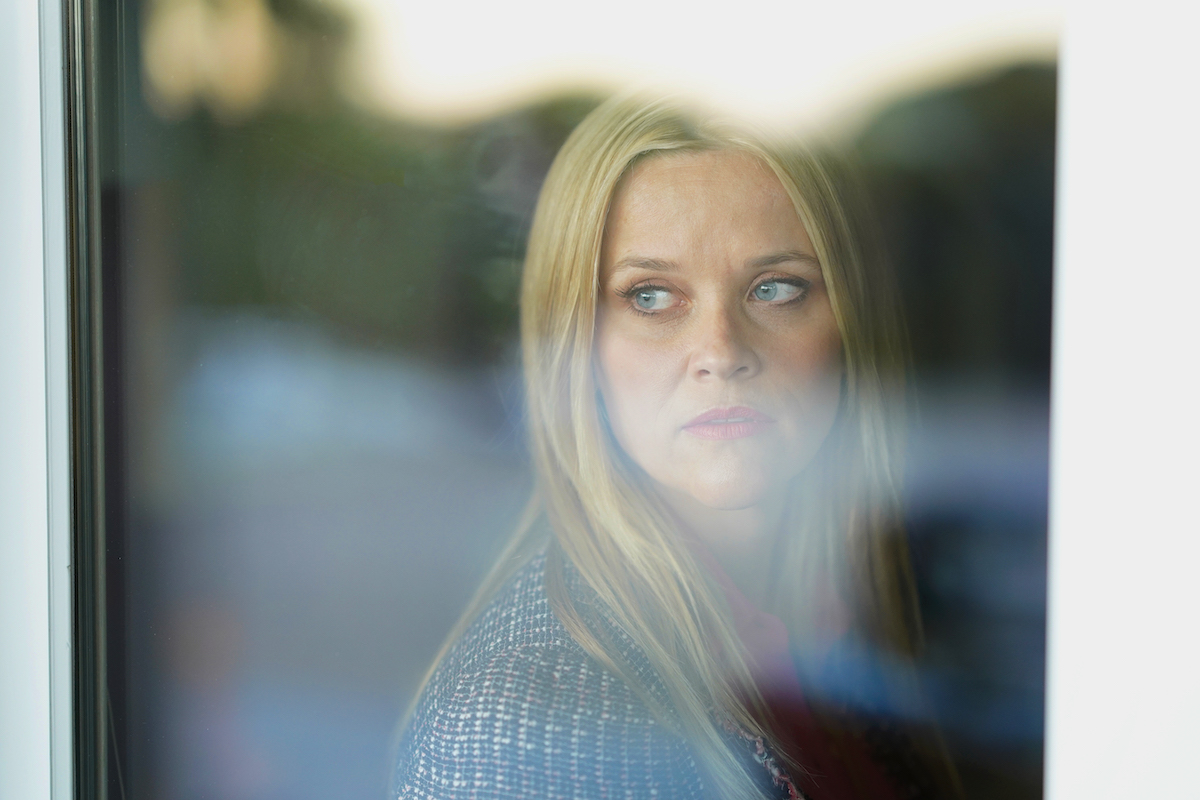Guild DP Jim Frohna and director Andrea Arnold probe “what lies beneath,” for Season 2 of HBO’s runaway hit, Big Little Lies.
by Matt Hurwitz
Jim Frohna emerges from the bedroom of Celeste Wright (Nicole Kidman), having just captured a gut-wrenching moment between Celeste and her husband, Perry (Alexander Skarsgård), in a flashback scene to Season 1 of HBO’s popular primetime soap, Big Little Lies. Holding a partial camera rig and backpack, Frohna (All in the Family, ICG Magazine, April 2015) is accompanied by his boom operator, Eddie Casares. Clearly moved by the emotion, he hugs his director, Andrea Arnold, as well as Kidman and Skarsgård. A-camera 1st AC, Faith Brewer, wipes tears from her eyes and smiles. “How did you know I was going to do that?” Frohna asks of his focus puller, about an unexpected pan move requiring a quick response. “I just knew,” Brewer grins.
Of course, this Guild camera team has the technical chops to shoot one of the most popular series on any small-screen platform, now finally debuting its long-awaited Season 2 this summer. But each member has a unique prerequisite not often asked of union craftspeople. Or as Frohna’s A-camera operator Shelly Gurzi, SOC, explains: “What we looked for when we put this team together was a great group of people that were not only super qualified but also emotionally connected.”
Adapted by 11-time Emmy-winning writer/producer David E. Kelly (Exposure, ICG Magazine, June/July 2019), from Liane Moriarty’s best-selling novel about the dark side of Monterey, CA’s wealthy beach community, Big Little Lies’ first season was directed by Jean-Marc Vallée and shot by Yves Bélanger (Carry-On, ICG Magazine, December 2014). For Season 2, Arnold, who had helmed episodes of two Jill Soloway series for Amazon, Transparent and I Love Dick, both shot by the Emmy-nominated Frohna, was brought on.
“This season was more about the fracturing reality of [the women’s] lives,” Arnold describes, “and since Jim and I see the world in many of the same ways, I knew he’d tackle it with compassion and humanity. I felt lucky Jim was able to join me.”
!["Jim [Frohna] and I see the world in many of the same ways," director Andrea Arnold notes. "I knew he’d tackle [Season 2] with compassion and humanity."](https://www.icgmagazine.com/web/wp-content/uploads/2019/06/BLL_201_27_041618_JC_351.jpg)
“Season 1 did a beautiful job of visually representing these seemingly perfect lives,” Arnold continues. “Immaculate houses, kelp-free beaches, and frames of empty sea. But now their lives have fractured with the weight of the lie they told, and that has consequences. I wanted to convey that visually by putting the camera in their space, so we’re seeing what they see,” which meant always including the characters in the frame, even when shooting reverses of others they encountered.
Frohna, who began his career as a gaffer and shot mostly commercials before gaining indie notoriety with the Jill Solway-directed Sundance hit Afternoon Delight (2013), has, over the years, created a close-knit camera team, many of whose ascension in the ranks he has helped promote. Gurzi, for example, worked as Frohna’s AC on commercials before he moved her to B-camera operator in Season 2 of Transparent.
“Shelly came with me when I did Afternoon Delight,” the DP recounts. “After the first season of Transparent, just knowing her eye and her heart, I sensed the possibility of her as an operator. She has a strong intuition and sense of framing. She knows when to move and when to be still, and it’s great to see her become so strong at handheld.”
As Brewer notes: “Shelly and I transitioned together to being first ACs, and we would refer work back and forth. When she got the opportunity to become an operator for Jim, I became part of that tribe.” Frohna says Brewer is one of the best ACs he’s ever had. “Faith is an invaluable collaborator,” he shares. “She’s got exceptional focus pulling skills, but what makes her so special is her connection to the story and deep compassion for the characters. Her insights and input make me a better cinematographer. I don’t ever want to do a project without her.”
As for B-Camera Operator D.J. Harder, they’ve been acquainted since Frohna’s gaffer days – Harder also bumped up to operator on Transparent, and now has Laura Goldberg (“G-berg,” as he calls her) as his 1stAC, and Eric Matos as his 2nd.
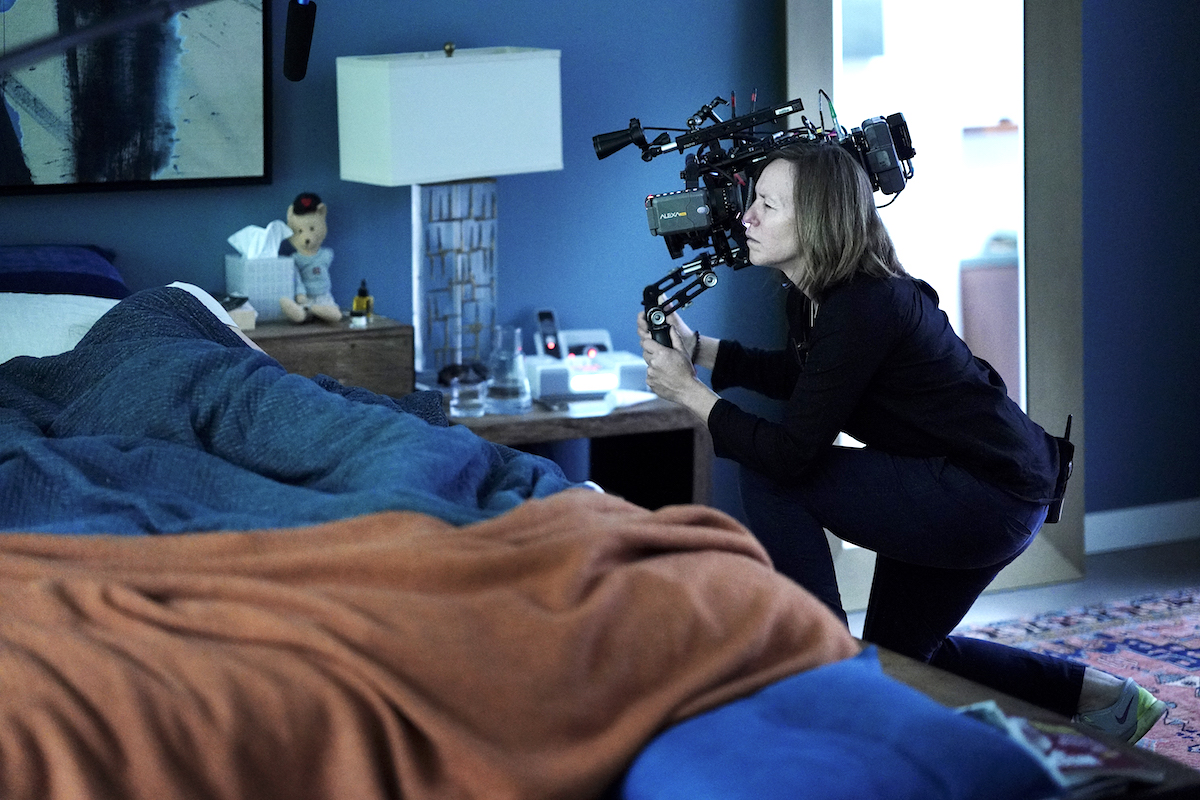
Although Frohna also operates (see below), he prefers to keep a loose and open structure among the different rigs. “Because Jim is so emotionally motivated,” Brewer adds, “he might suddenly say, ‘I want B-camera to do this.’ He’ll be responding to something that feels right, so that’s what we do.”
“It’s like a tag team,” Harder says. “Jim might do two-thirds of a scene on his own, and then Shelly does a shot, and I just need to be ready to go. Like a bullpen in baseball – you might start the scene, you might be the set-up guy or you might be the closer. That’s how we work.”
Another notable aspect of Frohna’s workflow is to employ a mostly female camera team. “There are a good number of female first and second AC’s, or women in other support positions,” he explains. “But I make a conscious effort to look for very skilled female operators. I feel it’s important in terms of building up the presence of women in leadership and creative positions on the set.”
“Jim has always had a diverse mix of people and gender on his team,” Arnold says matter-of-factly. “It’s how the world should be, and Jim thinks that way.”
The male members of the department welcome the change. “Having women on the set is more reflective of our real lives beyond these sets,” Harder notes. “And, honestly, who wants to work in a toxic environment? We’re beyond that. It’s something that Jim and Andrea believe in, and I’m happy to see things changing everywhere.”
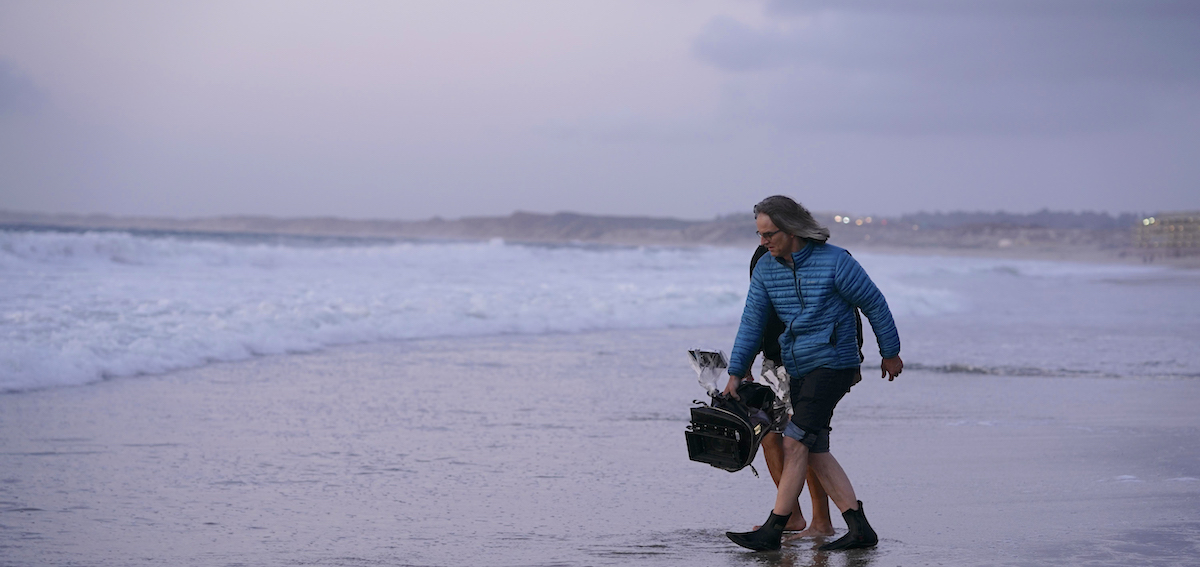
As Bélanger did with Season 1, Frohna used ARRI MINI’s supplied by Otto Nemenz. With DIT’s not typically in HBO’s shooting budgets, Dagmara Krecioch served mainly as Data Manager/Loader alongside Digital Utility Amanda Hamaday. Brewer says she and Gaffer Paul Samaniego discussed color temperature and vibe. “When we shot some tests initially,” Brewer shares, “we decided to go with Arriraw so that if something changed or there was a shift, the color wasn’t burned in.”
While Bélanger used Zeiss Super Speeds – a favorite of Frohna’s on Transparent – vintage glass was used on Season 2 to better capture the gauzy moisture in the Monterey coastal air. “I call it a ‘marine layer melancholy,” Frohna describes. “There’s a bit of a veil. And, to me, there’s so much about secrecy in this show, and so much about façades, and what’s behind the façade, that when you’re in Monterey this just confronts you.”
Frohna described this intent to Brewer, who pointed him in the right direction. “There’re a lot of vintage lenses that have been rehoused and reborn in the last few years,” Frohna continues. “I was lucky enough to learn about this old set of Canon K35s that were not rehoused and were a bit fragile, because of their age. But they just had a softness and lush quality that really helped bring in that overall melancholia.”
There was also a change made to one of the MINI rigs to create the smallest possible footprint around the cast. Dubbed the “Tiny Tot” and put together by Daisy Smith’s husband, the rig separates the camera battery, the Preston focus controller, and other gear into a Swiss Army backpack frame, which the shooter wears out of sight, leaving just the camera body and lens upon the shoulder. The items are connected via custom cabling held in a loom created by Tibor Szakaly at Otto Nemenz.
“For scenes with a high emotional or unspoken undercurrent,” Frohna recounts, “the Tiny Tot gave us more freedom than regular handheld, where we could really respond to the actors. It’s another way to move gracefully and unobtrusively, and just keep making frames as the characters move through the space.”
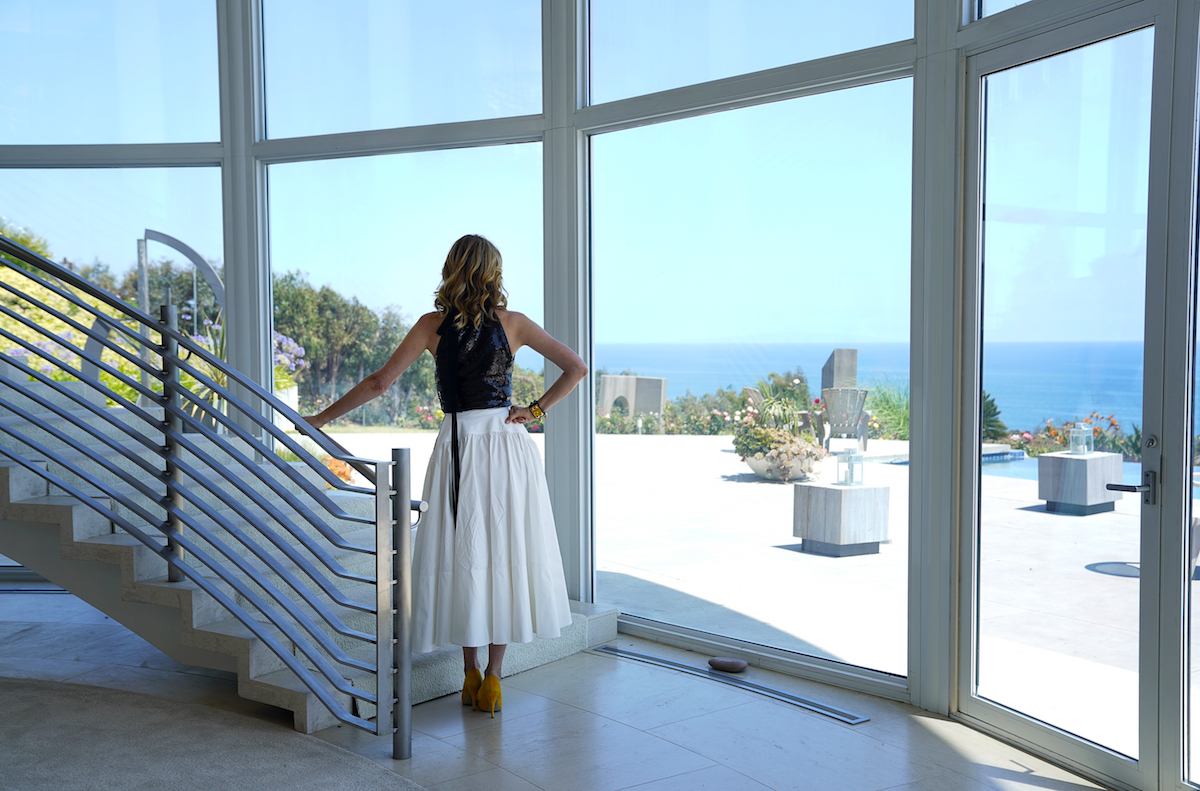
In addition to the Monterey locations, the show also shoots in Malibu and on stages at The Lot in Hollywood. Arnold says she gets inspired by “how real locations affect the characters.” Her affinity for location shooting follows along with Season 1, where, observes Production Designer John Paino, “we always preferred to shoot on locations. There is something essential about the patina of a real place that invigorates the actors and crew,” he adds. “But many of our location exteriors had corresponding interiors that were built on stage for practical reasons, so making sure a transition from one to another was seamless was key. A big part was working with Jim and his crew to provide them with the right amount practical lighting that matched.”
The setting for each woman’s home is character-specific, ranging from ultra-luxurious to modest. Renata (Laura Dern), the richest, lives in a mountain-top mansion (shot in Malibu), which Paino says is “over the top and crass,” with glossy, shiny finishes. “It’s a modern monstrosity,” adds Samaniego, another longtime Frohna associate. “We tried to make it feel modern, almost to the point where you wouldn’t want to sit on the couch because you’re afraid it’ll get dirty.”
Celeste’s home is “cultured and glacial, with colors that reflect that tone,” Paino adds. Samaniego says “there’s this perfection about [Celeste], but she’s hiding something. So everything outside seems bright, but her world is actually a bit dark.”
The gaffer used sources pushing through windows, “but not making it bright and bubbly – playing it a little on the darker side, underexposing a lot,” he adds, and with fill light used as needed. “We really relied heavily on the Alexa’s amazing latitude to let it play it dark,” he continues, “and then just extract what we could later.”
The exteriors, lower floors, and balcony of Celeste’s home were filmed in Monterey, while the bedroom and upper floor rooms were built as a set at The Lot. “There’s a lot of architectural lighting on the exterior,” Paino notes. “We completely rewired the ground floor, and the deck outside, to make sure all of the lighting in it was dimmable. Most of the houses we went into, especially those we used a lot, I would have an electrician put in dimmers, and change out LEDs.”
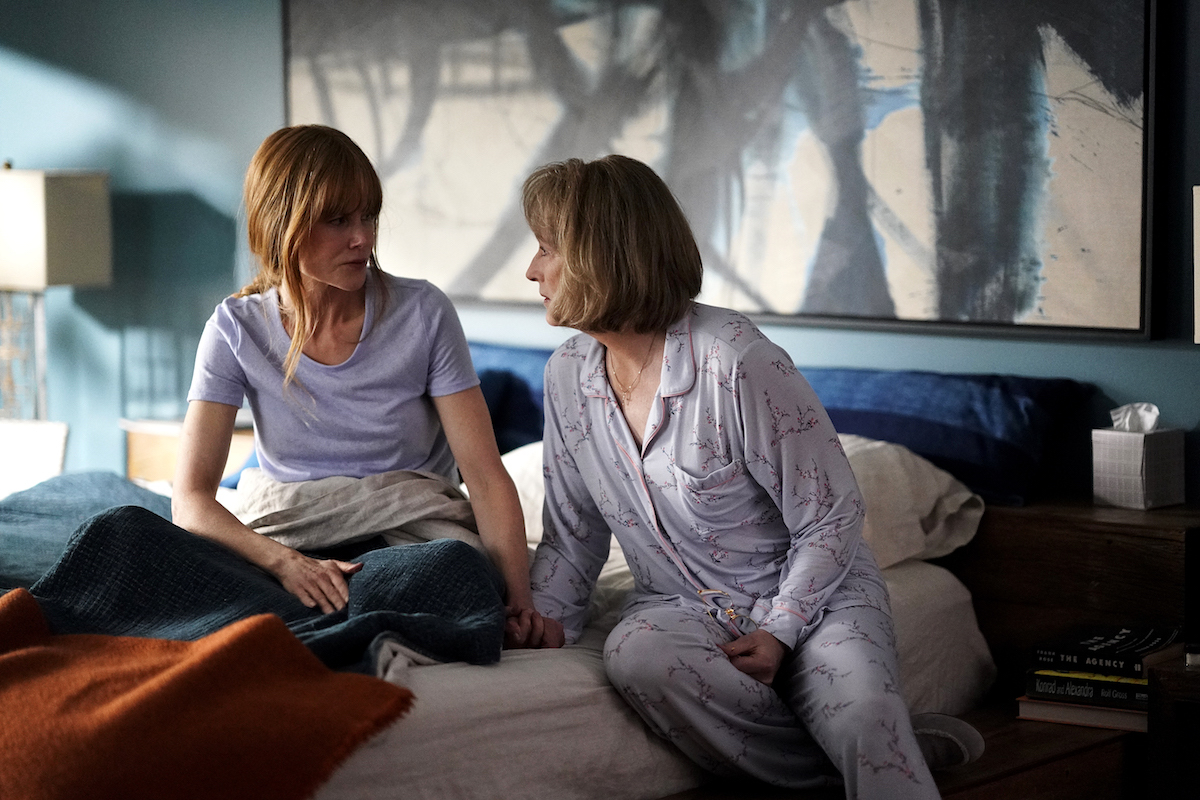
This approach fit Frohna’s taste, which Samaniego knows well. “Jim’s a naturalist,” the gaffer notes. “He likes to keep it as realistic as possible. If it wouldn’t naturally exist in that environment, we try not to head in that direction with the lighting,” he says, referencing Dogme 95, though not quite to that extreme. “It’s like: ‘Let’s walk into a room, see how it is, and then understand the emotional beats and contents of the scene, and try to lend the lighting that supports that.’”
Much of the approach involves natural light and practicals.
“We would ask, ‘How does the light get into this room? And how can we supplement that?’” Paino shares.
Often that means the art department placing lights into the location, or even building out walls to cover cabling.
“It’s a carry over from the first season,” Paino recalls, “in that any way we could incorporate practical lighting and make it seem that it was ‘built-in’ and you wouldn’t give it a second thought when you walked onto the set – that was the goal. On the past few shows it seems our department is actually contributing to lighting the film more than just providing floor lamps as needed.”
Samaniego would supplement practicals with a LiteGear LiteMat in a set with a chandelier, “always to just bolster the motivation the camera normally sees.” The gaffer also created a pair of instruments dubbed “Mema” and “Pepa,” built from JEM ball parts, “which had thicker gauge cable, so I could put a higher wattage globe in it than a household practical, which is limited to about 100 watts,” then covered with big or small lampshades. “If you had a practical lamp, you could dim it down for proper exposure level, but then, off camera or out of frame, I could put this Mema or Pepa, and if it got caught in a reflection, it would just look like a lamp that was in the room,” he adds.
The cast appreciated the emphasis on built-in lighting, as it allowed for great physical freedom in any given scene. “The approach is ‘light spaces, not faces,’” Samaniego describes, “and not have to rely on marks. That way the actors can develop the scene with the director. If we did sneak [light] in after a take to help out a bit – it would always be motivated from a source.” Adds Frohna: “We always prioritize the actors and give them room to create and bring life to the scene.”
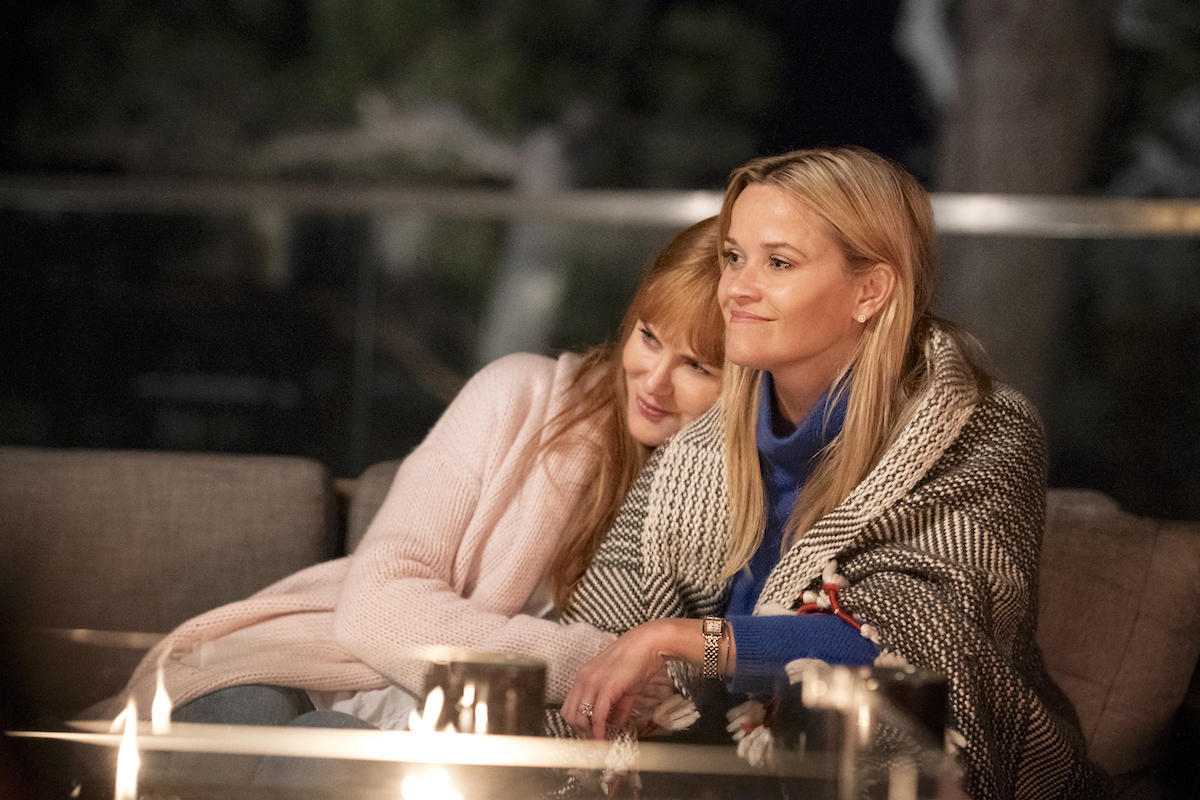
Serving the cast is what Frohna’s camera team does best, and that’s largely driven by the inspiration provided by their boss. Or as Arnold puts it: “The challenges of a film environment bring out your true nature. Over the time I have worked with Jim, I’ve seen him be a loving, thoughtful, emotional, passionate human being – all of which flows naturally into his work.”
And, “as this is a show about women,” Arnold continues, “I do think it’s important to have women around the camera. And operating. I think it helps to bring a kind of comfortable balance that everyone feels.”
Gurzi agrees, adding that level of comfort extends to the female cast members. “I think it really speaks to the show,” she states, “because the women are behind it, supporting women. In that way, perhaps, it allows [the actors] a little bit more vulnerability in their performance. I’ve had previous actors say, ‘I’m so glad to have a woman on the team, filming me in this nude scene.’ It’s just a different comfort level.”
As befitting what Brewer calls “a super-emotional approach to filmmaking,” Frohna’s directive to his operators is: “Shoot from your heart, not from your head.”
“That’s been a running theme, about us connecting to the scene,” Gurzi says. “So much of [the operating craft] is intuition and feel. It isn’t so much about the technical as always being present in the scene.” Adds Harder: “You can observe, or you can absorb. If you’re absorbing, you’re taking whatever energy is in the take and pulling it into your camera, and yourself. It’s very cathartic.”
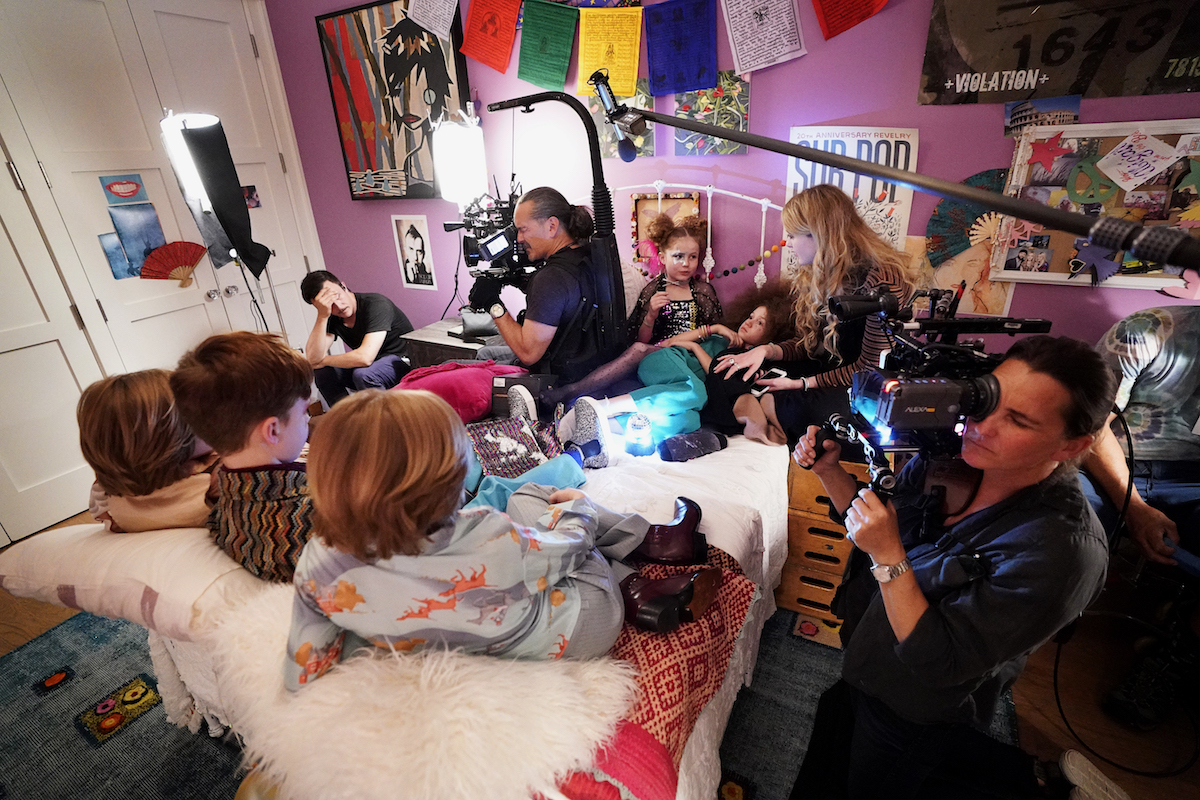
Per Arnold’s approach, ninety-nine percent of Season 2 was shot handheld. “I think actors feel restricted by dollies, track, and even Steadicam,” the director shares. “I find their movement artificial.” Gurzi says Arnold wanted the operators near the character or following the character so that the audience can feel and sense what they’re going through. “It’s not about being a witness, but more like a character in the story,” Gurzi explains. “I’ve had actors tell me: ‘We feel you, we’re connected.’”
For those particularly intimate or logistically challenging scenes, like a small bedroom set, Frohna will dive in with the Tiny Tot (no shoes!) and only the boom operator, leaving Brewer outside to pull focus at a monitor.
“The operators that work with me know that I love to operate,” the DP explains. “And there were certain scenes where Andrea would want me to just feel my way through the scene, as the actors are doing the same. She would turn and say, ‘Jimmy, do this one with the Tiny Tot.’ Or she would just give me the look, and I’d know what she meant.”
What is captured while making that intimate connection between actor and camera is, everyone agrees, remarkable. “Jim is fantastic at finding moments, and knowing where to put himself in relationship to the characters,” Samaniego concludes. “It’s fascinating to watch because he just lands on these shots that are so powerful, and they’re always at the right time. He’s almost psychic about it.”
Of course, such benefits are not without ripples – like Brewer pulling focus for a handheld camera, with a wide-open iris to limit the depth of field, in a darkened room.
“Jim wouldn’t want us in the room, to not be seen by the actors,” Brewer explains. “But if you put the headphones on, and lock in for the feeling and listen to the dialogue, you get your rhythm with him. He’ll tell me: ‘We’re gonna dance. Just be with me, and be there with your heart.’ And we would do it! We would be there together, just dancing with the actors. I’ve never really seen anything else quite like it before.”
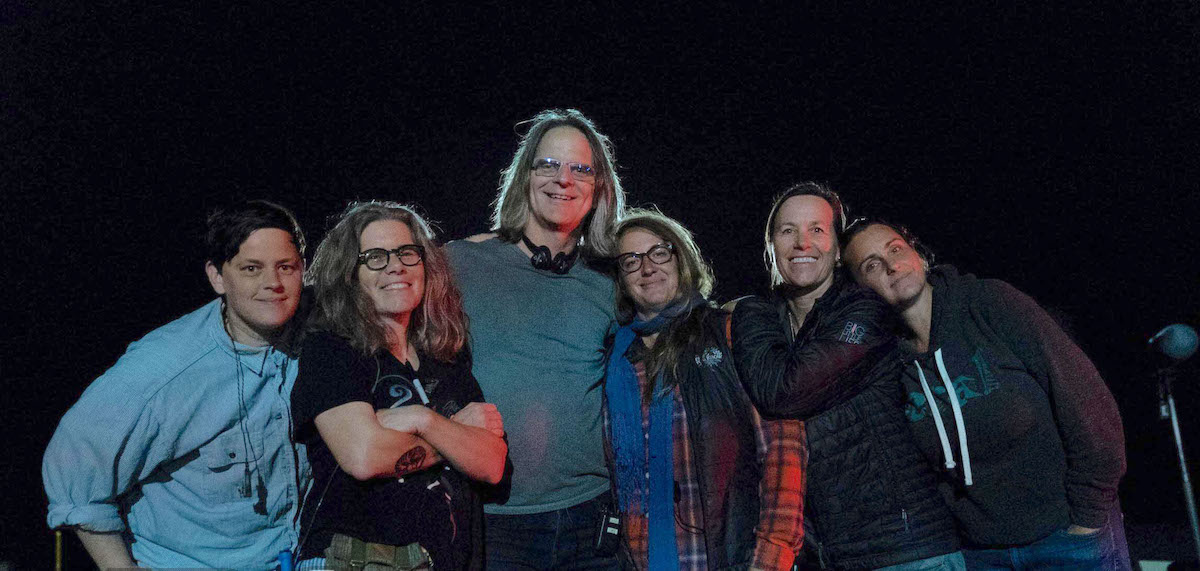
Big Little Lies: Season 2
Local 600 Crew
Director of Photography: Jim Frohna
A-Camera Operator: Shelly Gurzi, SOC
A-Camera 1st AC: Faith Brewer
A-Camera 2nd AC: Daisy Smith
B-Camera Operator: D.J. Harder
B-Camera 1st AC: Laura Goldberg
B-Camera 2nd AC: Eric Matos
C-Camera Operator: Kristy Tully
Additional AC: Michael Ashe
Loaders: Dagmara Krecioch, Johanna Salo
Utilities: Amanda Hamaday, DJ Williams
Still Photographer: Jennifer Clasen, SMPSP, Merie Weismiller Wallace, SMPSP
Unit Publicist: Gabriela Gutentag
Underwater Unit
Operators: Robert Settlemire, Sean Gilbert, David William McDonald
Techs: Drew Dumas, Michael Luntzel
